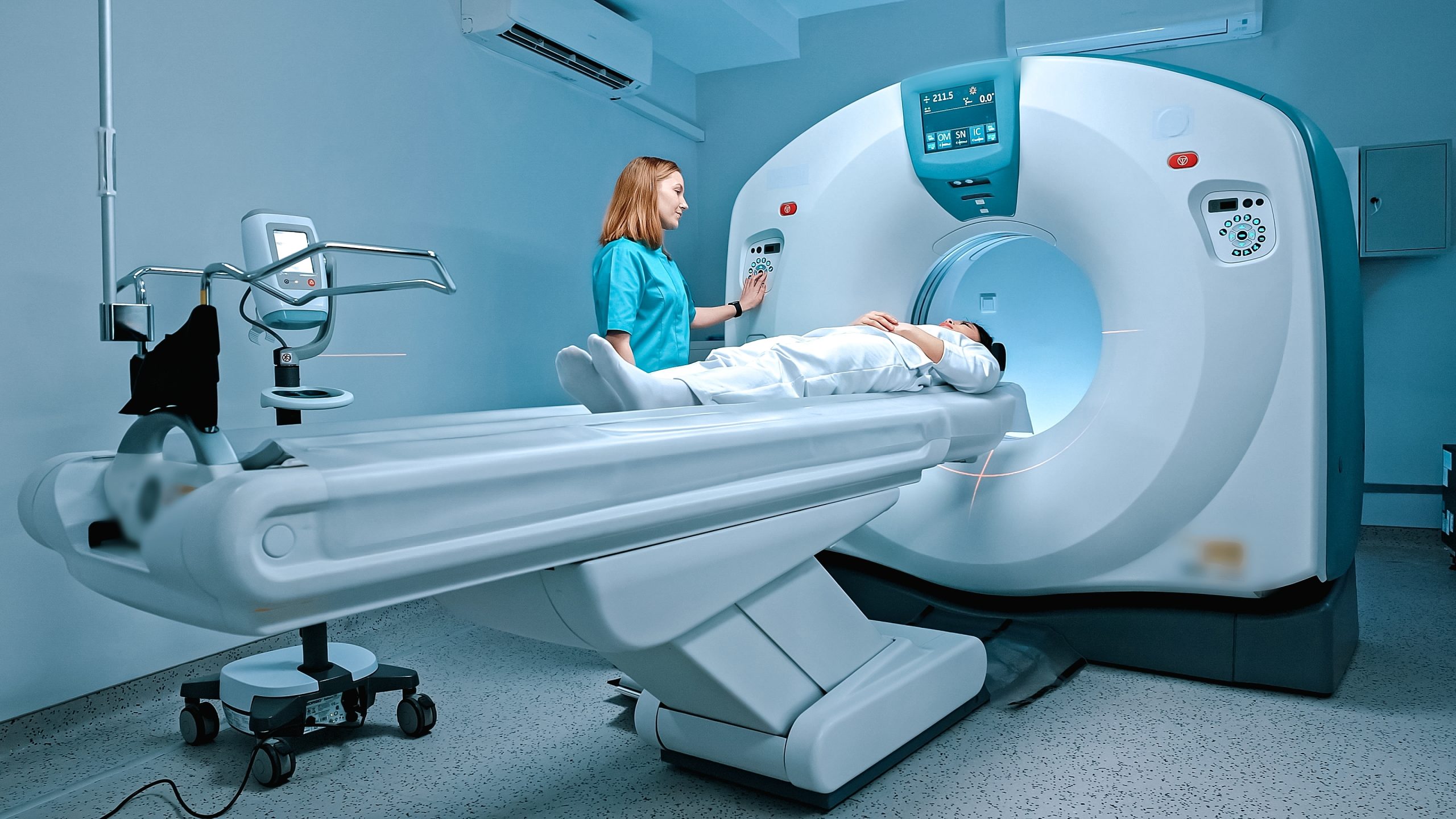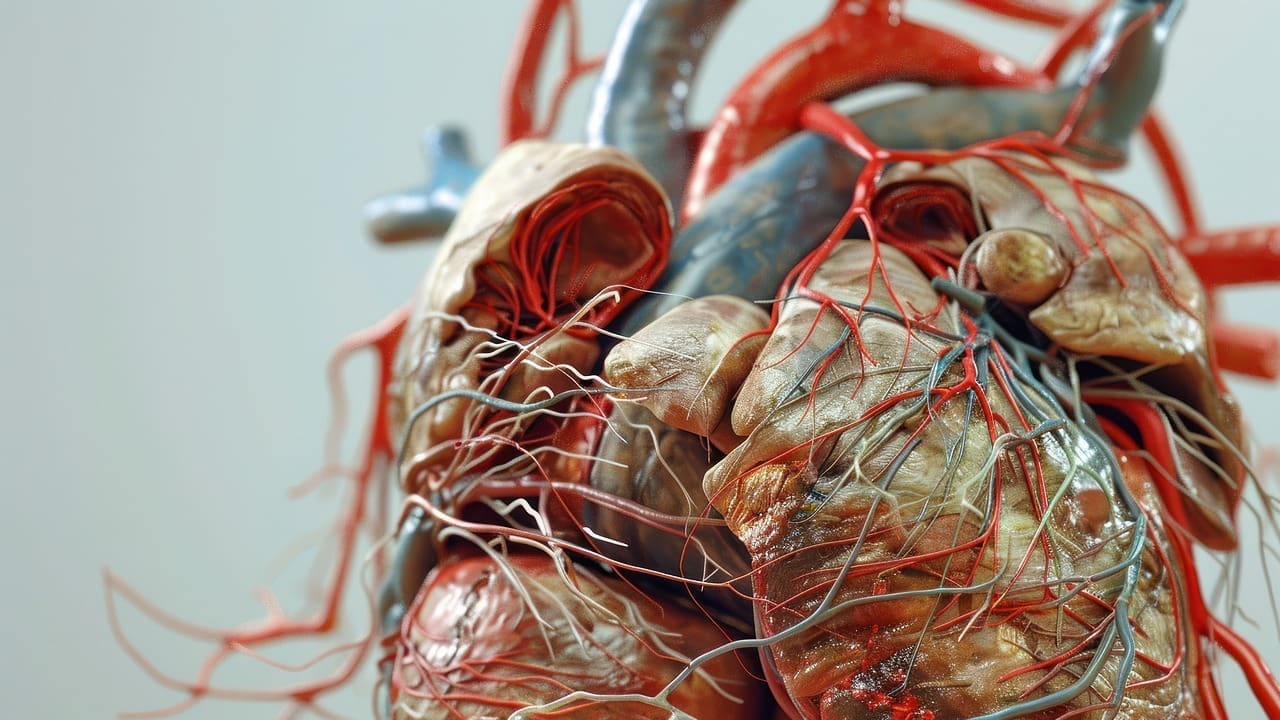Last Updated on November 27, 2025 by Bilal Hasdemir
According to the American Cancer Society, one in eight women will develop breast cancer in their lifetime. Regular breast exams are key for catching it early.
The three finger test is a simple yet effective way to check for breast abnormalities. It uses three fingers to feel for lumps or changes in the breast tissue. This method is part of a breast self-examination, done monthly to keep an eye on breast health.
Knowing how to do a breast exam right is important for spotting problems early. The three finger test is a big part of breast self-examination steps. It helps women get to know their breasts and spot any odd changes.
Key Takeaways
- Regular breast exams are key for catching breast cancer early.
- The three finger test is a simple way to check for breast abnormalities.
- Breast self-examination should be done monthly.
- Knowing how to do a breast exam right is vital for spotting problems.
- The three finger test helps women get to know their breasts and spot odd changes.
The Importance of Breast Self-Examination

Breast self-examination is key for catching breast cancer early. This can lead to better survival rates. By checking their breasts often, people can learn what’s normal. This makes spotting any unusual changes easier.
Early Detection and Survival Rates
Health groups agree that finding breast cancer early boosts survival chances. Research shows early detection leads to better treatment outcomes. Regular self-checks can spot changes in breast tissue, hinting at health issues.
Key statistics on early detection and survival rates include:
- Early detection can increase the 5-year survival rate for breast cancer to over 90%.
- Regular self-exams can help identify breast cancer at an early stage, when it is more treatable.
- Women who perform regular self-exams are more likely to detect changes in their breasts, which can lead to earlier diagnosis and treatment.
Who Should Perform Regular Self-Exams
Breast self-examination is advised for women of all ages and risk levels. The risk of breast cancer grows with age, but all women should check their breasts. Those with a family history of breast cancer or other risk factors need to be extra careful.
Guidelines for who should perform regular self-exams include:
- Women aged 20 and above should perform monthly self-exams.
- Women with a family history of breast cancer should start self-exams earlier, typically around age 20 or 10 years before the age of the relative’s diagnosis.
- Women with dense breast tissue or other risk factors should discuss their individual needs with their healthcare provider.
What is the Three Finger Test for Breasts?
The three finger test is a simple way to check your breasts for lumps or other issues. It uses three fingers to feel the breast tissue well.
With three fingers, you can cover more area and feel different pressures. This makes it easy to do at home.
Definition and Purpose
The three finger test is a way to check your breasts. It uses your index, middle, and ring fingers. It helps you get to know your breast’s shape and find any problems.
Doing this test often can spot breast cancer early. This can lead to better treatment results.
Why Three Fingers Are Used
Using three fingers is smart. It lets you check the breast better. You press lightly, medium, and deeply with each finger.
This way, you can check every part of your breast. It helps you find any issues, so you know how to check your breasts right.
The Anatomy of Breasts and What to Look For
It’s important to know how breasts are made up for self-exams. Breasts have glandular, fatty, and connective tissues. These tissues shape the breast’s structure and how it feels.
Normal Breast Structure
Normal breasts have lobules, ducts, and stroma. Lobules make milk, ducts carry it to the nipple, and stroma is fatty tissue. The breast tissue goes from the collarbone to the armpit and down to the bra line. What’s normal can vary a lot from person to person.
The nipple-areola complex is key in breast anatomy. The areola, the area around the nipple, has glands that keep it moist. It’s normal for the nipple to point inward or outward and for the areola to be different sizes.
Common Variations in Breast Tissue
Breast tissue can feel different in different areas. The upper outer part (toward the armpit) often feels denser because of more glandular tissue. Some women have more fibrous or lumpy tissue, which is common, mainly in younger women or those with a family history of dense breasts.
Knowing what normal breasts feel like is essential. Breast tissue usually feels a bit lumpy or granular. The feel can change with the menstrual cycle because of hormones. Recognizing these changes helps spot any unusual signs that might need a doctor’s check.
Learning about the normal structure and common variations in breast tissue helps with self-exams. It makes it easier to know what to look for during these checks.
When to Perform Breast Self-Examinations
To get the most out of breast self-exams, knowing when to do them is key. The right time can make a big difference in spotting issues and knowing what’s normal.
Optimal Timing During Menstrual Cycle
The menstrual cycle is important for finding the best time for breast self-exams. Hormonal changes during the cycle can make breasts feel different. It’s best to check your breasts 7-10 days after your period starts. This is when hormonal effects are more stable, and breasts are less likely to be sore or lumpy.
For women who have stopped menstruating or have irregular periods, picking a specific day each month works well. For example, the first day of the month can be a good choice.
Recommended Frequency by Age Group
The age you are affects how often you should do breast self-exams. Women under 40 should check themselves once a month. This age group has denser breast tissue, making regular checks important to know what’s normal.
Women over 40 should also do monthly self-exams. They should also get regular mammograms and clinical breast exams as their doctor suggests. Being consistent is important to catch any changes or problems early.
Preparing for the Three Finger Test
Learning how to prepare for the three finger test can make your breast self-examination better. Getting ready right helps you do the exam well and spot any changes in your breast tissue.
To begin, it’s key to create the right environment for your breast self-examination. This means picking a quiet, comfy, and private spot where you can relax without interruptions.
Creating the Right Environment
- Choose a room with good lighting, like natural light, to help you see your breasts.
- Make sure you have a mirror that lets you see your breasts clearly.
- Have a comfy surface, like a bed or couch, for lying down during the exam.
Mental Preparation and Body Awareness
Mental prep is as important as setting up the right physical space. Take a few minutes to relax and calm your mind before starting. Deep breathing can help lessen any anxiety about doing a self check breast examination.
- Try relaxation techniques, like deep breathing or meditation, to calm your nerves.
- Get to know your breast tissue by doing regular self-exams. This will help you know what’s normal for you.
- Pay attention to your body and any changes that happen during your menstrual cycle. This can change how your breasts feel.
By following these steps and sticking to your breast exam self routine, you’ll get better and more confident at doing the three finger test.
Step-by-Step Guide to the Three Finger Test
The three finger test is a simple yet effective method for breast self-examination. It empowers individuals to take control of their breast health. By following this step-by-step guide, you can master the technique and become more aware of your breast tissue.
Proper Hand Position and Finger Placement
To begin the three finger test, start by placing your three middle fingers on your breast. The fingers should be together, with the pads flat against your skin. The correct finger placement is key for an effective examination. Make sure your fingers are not too tense or too relaxed, as this can affect the sensitivity of the examination.
Systematic Examination Approach
A systematic approach is vital when performing the three finger test. Start by examining the outer quadrants of your breast, working your way around in a circular motion. Use a gentle, rotating motion with your fingers to feel for any abnormalities. It’s essential to cover the entire breast area, including the nipple and the armpit.
| Area to Examine | Technique | Tips |
| Outer Quadrants | Use a circular motion with three fingers | Start from the outer edge and work inwards |
| Nipple and Areola | Gently press around the nipple | Check for any discharge or changes |
| Armpit | Use a gentle, sweeping motion | Feel for any lumps or swelling |
By following this step-by-step guide and practicing regularly, you can become proficient in the three finger test. This will help you detect any changes in your breast tissue.
Examining Different Areas of the Breasts
When you do a breast self-exam, make sure to check every part of the breast tissue. This way, you won’t miss any possible problems.
Quadrant Examination Method
One good way to do a breast self-exam is the quadrant method. You divide the breast into four parts and check each one carefully.
- Begin with the upper outer quadrant, near the armpit.
- Then, look at the upper inner quadrant, closer to your chest’s center.
- Next, examine the lower outer quadrant.
- Lastly, check the lower inner quadrant.
This method helps you check the whole breast area well.
Checking the Nipple and Areola
It’s also key to check the nipple and areola. Look for any changes in the nipple’s shape or color. Also, check for any discharge or crusting.
- Gently squeeze the nipple to see if there’s unusual discharge.
- Look at the areola for any color, texture, or small bump changes.
Examining the Armpit and Surrounding Tissue
The armpit and surrounding tissue are also important to check. Breast tissue can be found in the armpit, and lumps can appear there.
- Use your fingers to feel for lumps or swelling in the armpit.
- Also, check the area above the breast and towards the collarbone.
By following this method, you can do a thorough breast self-exam.
What Normal Breast Tissue Feels Like
Knowing what normal breast tissue feels like is key for breast self-examination. It can feel different from one person to another and even change over time. This makes it important to learn what’s normal for you.
Common Textures and Consistencies
Normal breast tissue can be dense and firm or soft and fatty. It might also feel lumpy or granular, mostly in the upper outer areas. Getting to know your breast’s normal feel is vital to spot any changes.
A study in the Journal of Women’s Health found that breast density affects cancer risk. Dense tissue makes mammograms less clear, showing why self-exams are important.
“The normal breast is a complex mixture of glandular, fibrous, and fatty tissue, and its texture can vary significantly from one woman to another.”
” American Cancer Society
Changes Throughout the Menstrual Cycle
Breast tissue changes with the menstrual cycle due to hormone shifts. Before menstruation, breasts may feel tender and lumpy. After, they usually go back to normal.
| Time in Menstrual Cycle | Breast Tissue Changes |
| Pre-Menstruation | May become tender and lumpy |
| Post-Menstruation | Typically returns to normal texture |
| Mid-Cycle (around ovulation) | Some women may experience increased breast tenderness |
Doing self-exams at the same time each month helps you know what’s normal.
Understanding your breast’s normal feel and changes is key. It helps you spot problems early, which can lead to better treatment if needed.
Identifying Potencial Signs of Breast Cancer
Spotting breast cancer early is key to better survival rates. It’s important to know what to look for. Breast cancer often shows specific signs that can be found through self-examination or clinical screening.
Types of Lumps and Their Characteristics
Breast lumps are a common worry and can be either harmless or cancerous. Malignant lumps linked to breast cancer are hard, irregular, and painless. But, not all breast cancers show up as a lump; some may change the breast’s shape, size, or feel.
It’s important to remember that not all lumps are cancerous. Benign lumps can stem from things like cysts or fibroadenomas. Yet, any new or odd lump should be checked by a healthcare provider.
Other Warning Signs Beyond Lumps
Besides lumps, there are other signs that might point to breast cancer. These include:
- Changes in the nipple, such as inversion or discharge
- Dimpling or thickening of the breast skin
- Redness or scaliness of the nipple or breast skin
- Swelling or shrinkage of the breast
As the American Cancer Society notes, “
It’s essential to be aware of these changes and report them to your doctor.
” Early detection is key to effective treatment.
Being watchful of these signs and talking to a healthcare provider if you notice anything unusual can greatly affect breast cancer treatment outcomes.
Visual Inspection as a Complement to the Three Finger Test
Visual inspection is key to checking your breasts. It helps find changes that the three finger test might miss. This way, you get a better look at your breast health.
To check your breasts visually, stand in front of a mirror. Look at your breasts first with your arms at your sides, then with your arms raised overhead. This helps you see any changes in shape, size, or how even they are.
What to Look for in the Mirror
When you’re in the mirror, look for these things:
- Changes in the size or shape of one breast compared to the other
- Dimpling or puckering of the skin
- Redness or scaliness of the nipple or breast skin
- Inversion of the nipple (if it’s not a normal state for you)
- Any discharge or bleeding from the nipple
Positions for Thorough Visual Examination
Try these positions to get a good look at your breasts:
| Position | What to Observe |
| Arms at sides | General shape, size, and symmetry |
| Arms raised overhead | Any changes in shape or dimpling |
| Hands on hips, pressing inward | Muscle tension and any irregularities |
| Leaning forward | Breast contour and any abnormalities |
By using the three finger test and a visual check, you can really improve your breast self-exam. This might help you find problems early.
Common Challenges When Performing Breast Self-Exams
Breast self-exams are important but can be tough for many. People face different challenges that can make self-exams less effective.
Examining Dense or Fibrocystic Breasts
Women with dense or fibrocystic breasts find self-exams hard. Dense breasts have more glandular and connective tissue. This makes it tough to spot any problems.
A study in the Journal of Women’s Health found that dense breasts make self-exams harder. But, knowing how to do it right can help a lot.
| Breast Type | Characteristics | Self-Exam Challenges |
| Dense Breasts | More glandular and connective tissue | Difficulty identifying lumps |
| Fibrocystic Breasts | Lumpy or rope-like texture | Confusing normal texture with abnormalities |
Self-Examination During Pregnancy and Breastfeeding
During pregnancy and breastfeeding, breasts change a lot. They get bigger and have more glandular tissue. This makes self-exams harder.
Women in these times need to know about these changes. They should keep doing self-exams, understanding these normal changes.
Examining Larger Breasts
People with bigger breasts find it hard to cover the whole breast during self-exams. It’s important to be thorough and systematic. You might need to use different positions to check all areas.
Looking in a mirror can also help. It’s great for those with bigger breasts. It lets you see any changes or problems.
When to Consult a Healthcare Provider
Knowing when to see a doctor is key for breast health. Regular self-exams are good, but knowing when to get a professional’s help is even more important. This can lead to early detection and treatment.
Red Flags That Require Immediate Attention
Some changes in your breast or nearby areas need quick medical check-ups. Look out for these red flags:
- New or unusual lumps: Any new lump or thickening in the breast or armpit area should be checked.
- Changes in breast size or shape: Sudden or unexplained changes can be a cause for concern.
- Nipple discharge or changes: Spontaneous discharge, specially if it’s bloody, or changes in nipple direction.
- Skin changes: Dimpling, redness, or scaliness on the breast skin.
- Persistent pain: Ongoing pain in one area of the breast that doesn’t correlate with the menstrual cycle.
Most breast changes are not cancerous, but only a healthcare professional can provide a definitive diagnosis.
Documenting Your Findings for Medical Appointments
Before you see a doctor, it’s good to document your findings. This includes:
- Noting the date and time of your self-examination.
- Describing any changes or abnormalities you’ve found, including their location.
- Recording any symptoms or discomfort you’re experiencing.
- Making a list of any questions or concerns you have.
Documenting your findings helps your healthcare provider understand your situation better. This makes your appointment more effective.
By knowing the signs that need medical attention and documenting your findings, you can actively work on keeping your breast health in check.
Men’s Breast Health and Self-Examination
Men’s breast health is important to understand. It’s about knowing the risks and taking steps like self-exams. While breast cancer is more common in women, men can get it too. Being aware is key to finding it early and treating it.
Male Breast Cancer Risk Factors
Male breast cancer is rare but can happen. Certain things can make it more likely. These include:
- Age: The risk goes up after 60.
- Family History: Having breast cancer in your family, close relatives.
- Genetic Mutations: Having genes like BRCA2.
- Radiation Exposure: Getting radiation to the chest before.
- Certain Medical Conditions: Having Klinefelter syndrome or liver disease.
Knowing these risk factors helps men understand their own risk.
How Men Should Perform the Three Finger Test
Doing a self-exam is easy and can be done at home. Here’s how to do it:
- Choose the Right Time: Men don’t have a specific time for self-exams, unlike women.
- Use the Correct Technique: Use your three middle fingers’ pads to feel the breast. Start from the outside and move inwards in circles.
- Cover the Entire Breast Area: Make sure to check the whole breast, including the nipple and armpit.
Be thorough and gentle during the exam. If you find anything unusual, see a doctor.
Regular self-exams can help find problems early. This can save lives. Men, and those with risk factors, should make this part of their health care.
Alternative Breast Examination Techniques
There are more ways to check your breasts than just self-exams. Healthcare professionals use different methods to look at your breast health in detail.
Clinical Breast Examinations by Healthcare Providers
A healthcare provider does a clinical breast examination (CBE). They look for any oddities in your breasts. This check is more detailed than a self-exam and can spot problems that self-exams might miss.
- Trained Professionals: Healthcare providers know how to find oddities.
- Comprehensive Check: They do a visual check and feel your breasts.
- Early Detection: This can find problems early, which helps with treatment.
Mammograms and When to Start Getting Them
Mammograms are X-rays of your breasts to find tumors and diseases. Experts say to start mammograms at 40 or sooner if your doctor thinks you should.
Benefits of Mammograms:
- They find breast cancer early.
- Can spot cancers that are too small to feel.
- Help figure out what’s causing breast symptoms.
Other Screening Methods (Ultrasounds, MRIs)
There are other tests like ultrasounds and MRIs too. They’re used with mammograms or for women at high risk of breast cancer.
| Screening Method | Description | Use Case |
| Ultrasound | Uses sound waves to create images of the breast tissue. | Often used to investigate abnormalities detected by a mammogram or CBE. |
| MRI | Magnetic Resonance Imaging provides detailed images of the breast. | Recommended for women at high risk of breast cancer. |
Using these different ways to check your breasts can really help with keeping an eye on your breast health. They can also find problems early.
Myths and Misconceptions About Breast Self-Examination
Many people have myths and misconceptions about breast self-examination. They might not know the right way to do it or its benefits. This can cause unnecessary fear or a false sense of security.
Addressing Common Fears and Misinformation
Some fear that breast self-examination is painful or can cause cancer. But, evidence shows it’s not painful and doesn’t raise cancer risk when done right. Another myth is that it replaces doctor exams or mammograms, which is not true. It’s a tool to help find problems early.
Some think they can’t do self-exams because of dense or fibrocystic breasts. While it’s harder, it’s not impossible. Knowing your breasts can help you get better at self-exams.
Evidence-Based Facts About Self-Exams
Studies show that regular self-exams can find problems early, like cancer. A Journal of Clinical Oncology study found women who self-exam regularly find issues sooner.
| Myth | Fact |
| Breast self-examination is painful. | When done correctly, it’s not typically painful. |
| Self-examination causes breast cancer. | There’s no evidence that self-examination increases cancer risk. |
| Self-exam replaces clinical exams or mammograms. | Self-exam is complementary to, not a replacement for, clinical exams and mammograms. |
Knowing the truth can empower people to take care of their breast health. Regular self-examination is key.
Incorporating Breast Self-Exams into Your Health Routine
Adding breast self-exams to your monthly routine is key to keeping an eye on your breast health. These exams help find problems early. They are a big part of staying healthy.
Creating Reminders and Maintaining Consistency
To make breast self-exams a habit, setting reminders and staying consistent is important. Here are some tips:
- Set a monthly reminder on your calendar or phone.
- Choose a specific date, such as the first day of each month.
- Make it a part of your routine, like brushing your teeth or taking a shower.
Being consistent helps you get to know your breast tissue better. This way, you can spot any changes.
Tracking Changes Over Time
It’s important to track changes in your breasts over time. This helps you understand what’s normal for you. Consider the following:
| Month | Observations | Notes |
| January | No lumps, normal texture | Menstruating |
| February | Slight tenderness | Pre-menstrual |
Keeping a record helps you spot patterns and any problems early.
“The best way to take care of your breasts is to know what’s normal for you.”
American Cancer Society
Adding breast self-exams to your routine gives you knowledge about your body. It also helps you take a proactive approach to health.
By following these tips and making breast self-exams a regular part of your routine, you can better detect changes. This helps keep your breasts healthy.
Conclusion
Knowing how important breast self-examination is key for good breast health. By using the three finger test, you can spot any oddities early.
Spotting problems early is vital for managing and treating breast issues. Regular self-checks, along with doctor visits and mammograms, cover all bases for breast health.
Being proactive and informed helps you take control of your breast health. This way, you can make smart choices and get help when needed. It leads to better health and peace of mind.
Breast self-examination is a simple yet powerful tool for catching breast cancer and other issues early. Making it a regular part of your routine helps keep you healthy and well.
FAQ
What is the three finger test for breasts?
The three finger test is a way to check your breasts for lumps. You use three fingers to feel the breast tissue in a special way.
How often should I perform breast self-exams?
How often you should check your breasts depends on your age and risk factors. Most women are told to do it once a month, a few days after their period.
What is the best time to perform a breast self-exam during the menstrual cycle?
The best time is a few days after your period. This is when your breasts are less likely to be sore or lumpy.
How do I prepare for the three finger test?
To get ready, find a comfy spot, relax, and know your body. You can do it in the shower or in front of a mirror.
What should normal breast tissue feel like?
Normal breast tissue can feel bumpy, dense, or soft. Its feel can change during your cycle because of hormones.
What are the signs of breast cancer that I should look out for?
Look for new lumps, changes in size or shape, nipple discharge, or skin changes like dimpling or redness.
Can men get breast cancer, and should they perform self-exams?
Yes, men can get breast cancer, though it’s rare. Men with risk factors should think about doing self-exams.
What are the alternative breast examination techniques?
Other ways to check your breasts include clinical exams, mammograms, ultrasounds, and MRIs. These can give more detailed info about your breast health.
How can I incorporate breast self-exams into my health routine?
To make self-exams part of your routine, set reminders, stay consistent, and track changes. This helps you get to know your breast tissue better.
When should I consult a healthcare provider about my breast health?
See a doctor if you notice anything unusual, like new lumps, nipple discharge, or skin changes. Write down what you find to share with your doctor.
Are there any myths or misconceptions about breast self-examination?
Some people think self-exams don’t work or cause too much worry. But, there’s evidence that shows they can be helpful.
Can I perform a breast self-exam during pregnancy or breastfeeding?
Yes, you can do a self-exam during pregnancy or breastfeeding. But, remember that your breast tissue changes, so it’s key to understand these changes to spot any oddities.
How do I examine dense or fibrocystic breasts?
When checking dense or fibrocystic breasts, be gentle and thorough. Use the three finger test, as these breasts might feel bumpier or more tender.






